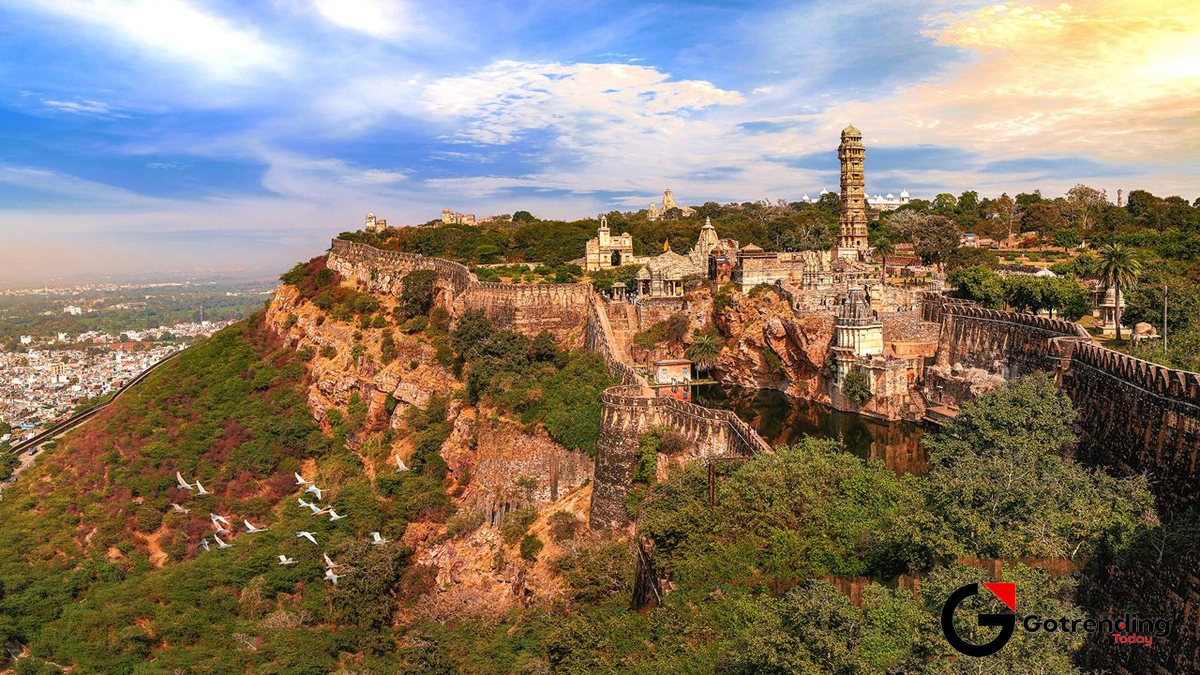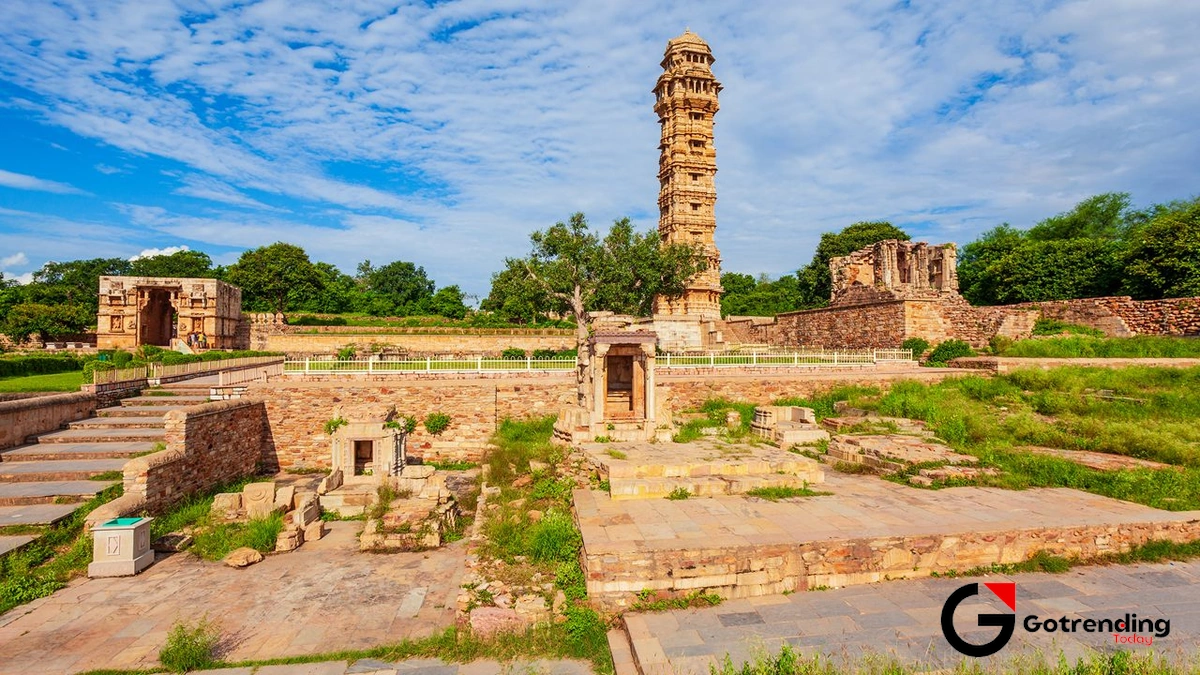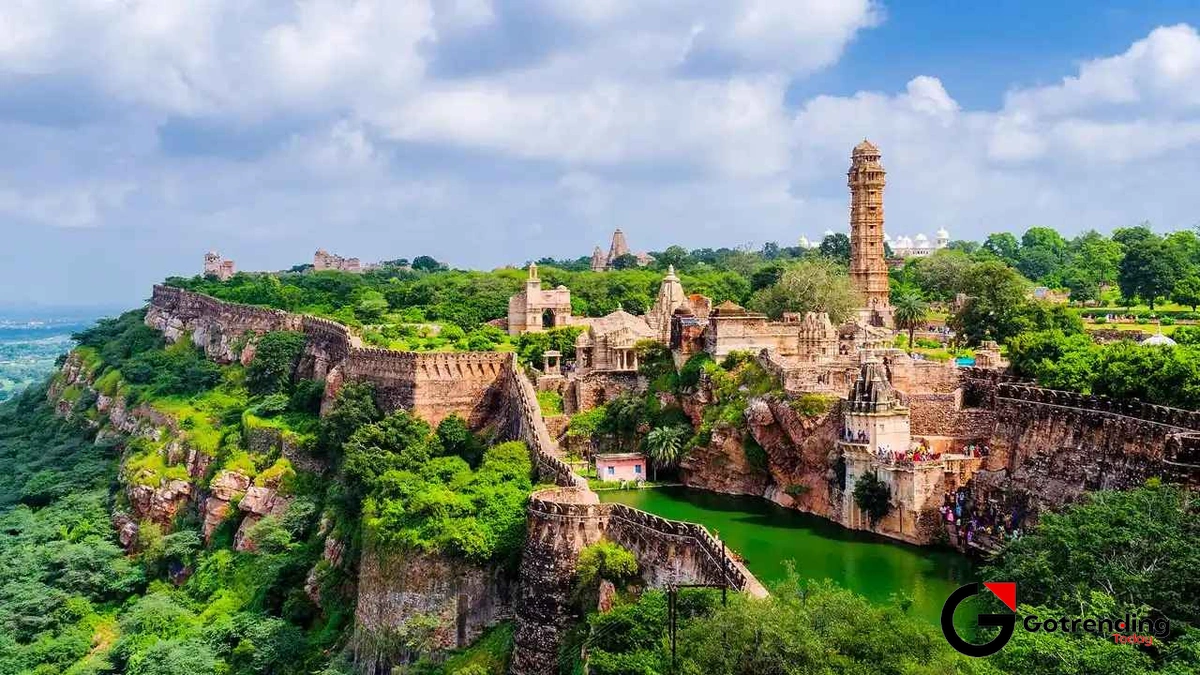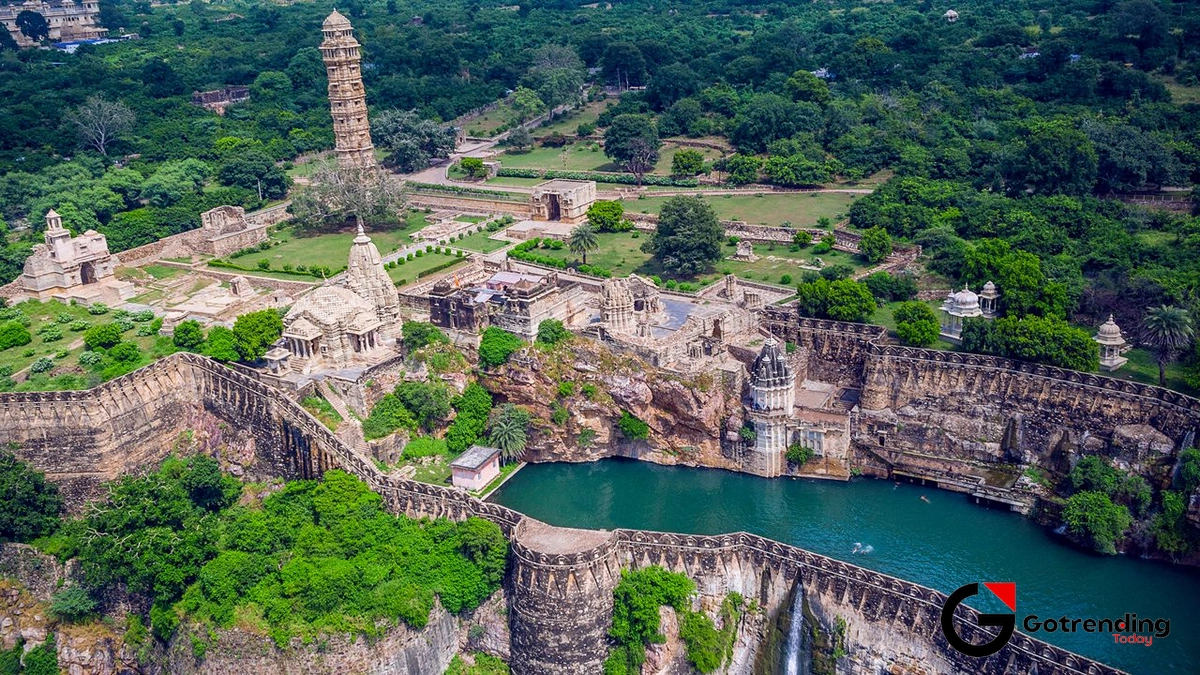Chittorgarh Isn’t a Place You Visit. It’s a Place You Feel.
I’ve always thought that if stones could talk, the ones at Chittorgarh would have the most harrowing, most courageous stories to tell. You don’t just go to Chittorgarh. You don’t just tick it off a list. It’s an experience that settles deep in your bones, a low hum of history that follows you long after you’ve left its massive gates. Forget the manicured lawns of other palaces. This place is raw. It’s a scar on the face of the Aravalli hills, and my god, is it a beautiful, terrifying scar.
More Than a Fort, A City of Ghosts and Glory

It’s the scale that gets you first. We call it the Chittorgarh Fort , but that feels like calling the Himalayas a nice hill. It’s a fortress-city, sprawling over nearly 700 acres on a high, lonely plateau. Think about that for a second. It had palaces, temples, reservoirs, markets… an entire, self-sustaining world perched above the plains, designed to withstand the unimaginable. It’s one of the largest forts in India, a key part of the collective Hill Forts of Rajasthan , and it feels every bit the part. Standing on its ramparts, with the wind whipping past you, you’re not just looking at a view. You’re looking out from the eyes of history.
But the sheer size is just the stage. The drama is what truly defines this place.
The Twin Flames of Chittorgarh | Defiance and Devotion

And what a drama it is. The story of Chittorgarh is a story of resistance. It’s the story of Mewar, a kingdom that stubbornly refused to bow down. It’s a story written in blood and fire.
You can’t talk about Chittorgarh without talking about Jauhar . Three times in its history, when defeat was certain, the women of the fort, led by their queen, chose mass self-immolation over capture and dishonour. The men, meanwhile, would don saffron robes and ride out for one final, fatal charge. It’s a concept that’s difficult for the modern mind to grasp. It’s brutal, it’s horrifying, but in the context of its time, it was the ultimate act of defiance.
The most famous of these is tied to the legend of Rani Padmini . A queen of breathtaking beauty, whose reflection alone was said to have driven Alauddin Khilji to obsession and war. Is the story entirely, factually true? Historians debate it. The first written account comes from a Sufi poem long after the event. But honestly, standing there, it almost doesn’t matter. The legend has become the truth of the place. It’s the spirit of Padmini, a symbol of Rajput honour, that hangs in the air. This isn’t just history; it’s the kind of epic narrative that defines a culture. The kind of story that would make for a blockbuster film, with a biography as compelling as any modern star, like say, the one about Kiara Advani’s journey , just on a completely different, ancient scale.
But wait. Chittorgarh isn’t just about fire and valour. There’s another, quieter spirit here.
That’s the spirit of Meera Bai . The mystic poet-saint who renounced her royal life to devote herself to Lord Krishna. Her story is also one of defiance, but of a different kind. She defied social norms, patriarchal structures, and her own family for her faith. Her temple, the Kumbha Shyam Temple where she prayed, still stands. It’s a pocket of peace amidst the echoes of war. To walk from the site of a Jauhar to the temple of a Bhakti saint is to understand the incredible, complex soul of India. Chittorgarh held both these fierce flames: the fire of war and the lamp of devotion.
Stone Sentinels | The Towers That Tell a Tale

And the architecture! It isn’t just rubble and ruins. The structures that survive are staggering testaments to the artisans of Mewar.
The absolute showstopper is the Vijay Stambha , or Victory Tower. Built by Rana Kumbha to commemorate his victory over the Sultan of Malwa, this thing is… well, it’s an ego trip carved in stone, and I mean that as a compliment. It’s nine stories high, covered from top to bottom in intricate carvings of Hindu gods and goddesses. It’s a veritable encyclopedia of mythology spiralling up to the sky. Climbing the narrow, winding stairs is a journey in itself, and the view from the top is your reward. You see the entire fort-city laid out below you.
Then there’s its older, more slender cousin, the Kirti Stambha (Tower of Fame). Dedicated to the first Jain Tirthankara, it’s a more ascetic, elegant structure. Seeing them both, you get a sense of the diverse spiritual currents that flowed through this Mewar history stronghold. These towers aren’t just buildings; they are statements. One a roar of victory, the other a whisper of faith. You start to see a pattern here, don’t you? Everything in Chittorgarh exists in these powerful dualities.
I often wonder how they managed such intricate designs without the tools we have today. It’s a question that makes you think about how we define intelligence and progress. We have tools like Perplexity AI that can answer anything in seconds, yet these artisans created something that still leaves us speechless centuries later. It’s a humbling thought.
So, when you list the places to visit in Chittorgarh , you’re not just listing spots on a map. You’re listing chapters in a very, very long book. The Rana Kumbha Palace, the Gaumukh Reservoir, Padmini’s Palace… each one holds a piece of the puzzle.
I keep coming back to the wind. It really does feel different up there on that plateau. It feels heavy with stories. Chittorgarh is more than a fort. It’s a pilgrimage for anyone who believes in the resilience of the human spirit. It’s a stark reminder that history isn’t a collection of dates and names learned in a classroom. It’s visceral. It’s the feeling of cool stone under your hand, the echo of a song in a quiet temple, and the weight of a thousand years of courage pressing down on you. Don’t just see it. Go and feel it.
Your Chittorgarh Questions, Answered
So, is the Chittorgarh Fort actually haunted?
Look, “haunted” is a strong word. But is it atmospheric? Absolutely. Given the violent history and the mass tragedies of Jauhar that took place here, it’s no surprise that the place feels heavy with memory. Many guides and locals will tell you stories of strange feelings or sounds, especially at night near the Jauhar Sthal or in the ruins of the Rana Kumbha Palace. I’d say it’s less about ghosts and more about the powerful, palpable energy of the past that lingers in the air. It’s easy to let your imagination run wild here.
How much time do I really need to explore the fort?
This is a common mistake people make. They think they can “do” the fort in two hours. You can’t. Remember, it’s a 700-acre complex. To do it any justice, you need a minimum of four to five hours. If you’re a real history buff, I’d honestly set aside a full day. Hire an auto-rickshaw inside the fort or bring your own car. Walking the entire thing is nearly impossible unless you’re a marathon runner with a history degree.
What’s the real story of Rani Padmini?
This is the million-rupee question! The most famous account comes from Malik Muhammad Jayasi’s epic poem “Padmavat,” written over 200 years after the siege of 1303. Most modern historians consider the story to be more of a legend or literary work than a factual historical record. There’s little contemporary evidence to support the mirror-reflection story, for example. However, the legend itself has become an integral part of Rajput culture and the identity of Chittorgarh . So, while the historicity is debated, its cultural importance is undeniable.
Is it worth getting a guide?
One hundred percent, yes. While you can wander around on your own, a good, licensed guide transforms the experience. They turn piles of stone into palaces and empty grounds into sites of epic battles. They know the stories, the shortcuts, and the best photo spots. Just be sure to hire a government-licensed guide from the official counters to avoid being misinformed or overcharged. They bring the whole story of this UNESCO World Heritage site to life.













